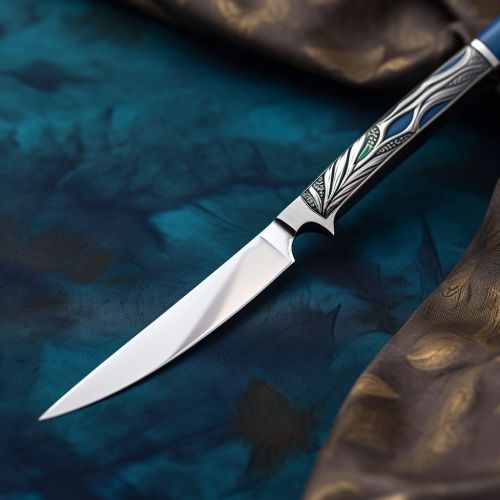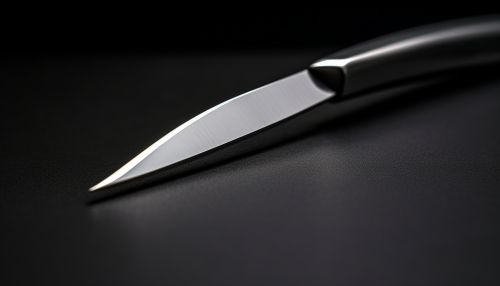Scalpel
Overview
A scalpel is a small and extremely sharp bladed instrument used for surgery, anatomical dissection, and various arts and crafts. Derived from the Latin word "scallpellus", meaning 'knife', the scalpel has been a fundamental tool in various procedures for centuries. The scalpel serves as a primary cutting tool in medical and surgical professions, with its design and utility having evolved over time to meet the changing needs of medical practitioners.
History
The history of the scalpel can be traced back to the Stone Age, where sharp flint stones were used as cutting tools. As civilizations advanced, so did the materials used to create these tools, with metals such as bronze and iron being used in Ancient Egypt and Rome. The modern scalpel, as we know it today, came into existence in the 19th century with the advent of stainless steel and later on, the use of carbon steel.
Design and Types
The design of a scalpel is relatively simple, consisting of two main parts: the blade and the handle. The blade is typically made of steel or another metal, and is designed to be extremely sharp to ensure precise cuts. The handle is typically made of metal or plastic and is designed to provide a secure grip for the user.
There are two main types of scalpels: disposable and reusable. Disposable scalpels come with a pre-attached blade and are intended for single-use. On the other hand, reusable scalpels have detachable blades that can be replaced, allowing the handle to be used multiple times.
Usage
In the medical field, scalpels are used in surgeries to make incisions in the skin and other body tissues. They are also used in dissections in the field of anatomy for educational purposes. In the arts, scalpels are often used in crafts such as paper cutting and sculpting.
Safety and Sterilization
Safety is a critical aspect when handling scalpels due to their sharpness. They are usually handled with care to avoid accidental cuts or injuries. Sterilization is also crucial in the usage of scalpels, especially in medical settings, to prevent infection. Methods of sterilization include autoclaving, the use of ethylene oxide, or gamma radiation.
Future Developments
With advancements in technology, the future of scalpels looks promising. Developments such as laser scalpels and ultrasonic scalpels are becoming more prevalent in surgical procedures. These types of scalpels aim to reduce blood loss and increase precision during surgery.


